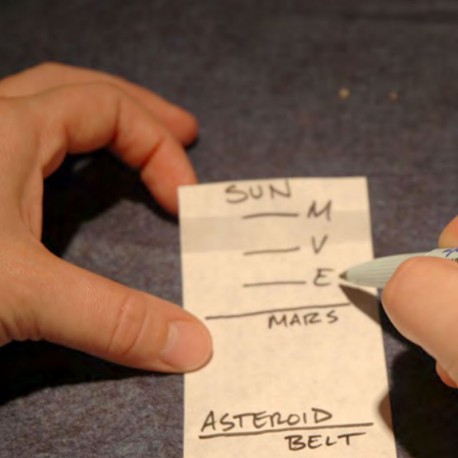 View larger
View larger
Pocket Solar System
New activity
Using a strip of paper, patrons construct a quick scale model of the distances between the objects of our solar system.
Open Activity
How-to Video
Implementation Guide
Provides extensive background information, facilitation outline, materials shopping list, extended supporting media suggestions, correlations to national standards, and more.
-
Rating
-
Participants Enjoyed the ActivityParticipants Learned from This ActivityActivity Instructions Were Clear and Easy to FollowWould Recommend
Related Programming Resources
Reviews
There's a solar system in my pocket!!
This is one of the easiest activities to facilitate for virtually any age group. The instructions are spot on, even including discussion points and facilitation hooks for inexperienced facilitators or facilitators with limited content knowledge. It also can be completed fairly quickly (15-20 minutes) to be paired with another activity or can be stretched out using those discussion points.
Personally, every time I have used this activity it has been paired with another activity. In the past, I have included it in discussions of understanding scale during engineering and math focused activities (participants usually have no problem understanding scale for things like furniture, vehicles, or buildings, but often don’t understand how to use it with much larger items/objects), as well as simply tying it in with other astronomy focused activities. My favorite pairings are with Sorting Games: How Big? How Far? How Hot? (http://clearinghouse.starnetlibraries.org/astronomy-and-space/77-how-big-how-far-how-hot-how-old.html) and/or Jump to Jupiter (http://clearinghouse.starnetlibraries.org/astronomy-and-space/65-jump-to-jupiter.html). The latter is great for tying in not just the scale between the planets, but also the scale of the planets themselves.
One final note, based on the age group, with younger participants, be sure to demonstrate how they should write the names of the planets on the pocket solar system. Also, be aware of those with large handwriting that might need help fitting the names of the planets, especially considering how tightly the inner planets are spaced.



